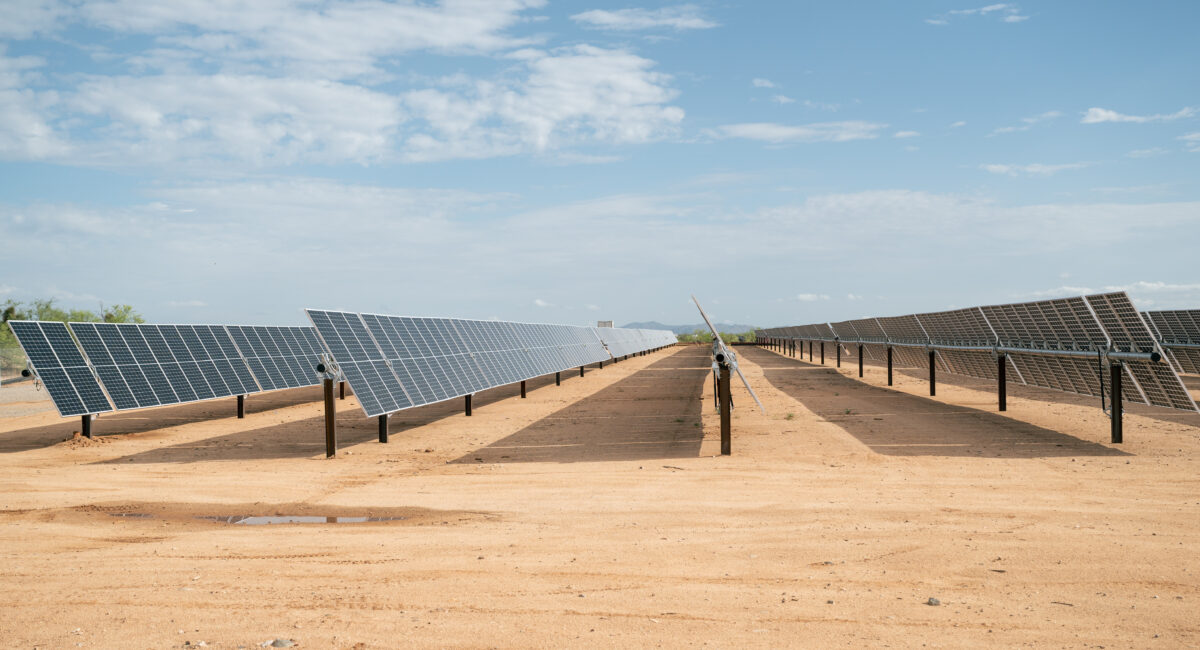Native American tribal lands encompass 6.5% of the utility-scale solar and wind potential in the U.S., but tribes face several barriers to deployment, said Margaret Tallmadge, senior development manager at Navajo Power, at a panel discussion at the RE+ conference in Las Vegas.
The newly-formed Alliance for Tribal Clean Energy, which serves as a liaison between tribes seeking to overcome those barriers and solar construction firms, is recruiting firms that are willing to “work in both worlds—renewable energy and traditional cultural preservation,” said panelist Dave Harper, the alliance’s head of tribal engagement. “We open doors” for developers to work with tribes, he said, including by offering cultural training to developers.
Tribal nations are eligible for a total of $20 billion in loans for their energy projects, said panelist Paul Dearhouse, a senior consultant with the U.S. Department of Energy’s Loan Programs Office.
Success story
A lot of tribes “are trying to figure out” their strategy for renewables development, said panelist Kevin Blaser, tribal energy and economic development executive with tribal entity Bakinaw Federal Contracting.
Blaser described how Bakinaw created a utility in the Midwest, with guidance on interconnection from the Federal Energy Regulatory Commission, and in partnership with Midwest grid operator MISO, which the utility joined to be able to buy and sell bulk power on the wholesale market.
Yet “one of the most influential partners,” said Blaser, was the Michigan Electric Transmission Company. That independent transmission company “didn’t have any vested interest in trying to protect any incumbent utility or any regulated monopoly that’s there, they just wanted to connect.” The transmission company also made “some really good introductions” to their customers, and “gave us a little bit of guidance,” smoothing the way for Bakinaw to “put in the work and build it.”
“We were kind of forced into it; it wasn’t really a strategic plan,” Blaser said. “The hardest part for us,” he said, was not having a model of success that Bakinaw could copy. “We had to figure it all out.” Generally speaking, he said, “that’s part of the whole process, particularly with tribal energy development, because there are 576 federally recognized tribes, and 576 different ways” of doing things, because each tribe has its own body of laws, and every culture is different.
Navajo lands potential
Panelist Jennifer Hershman, the director of community relations with solar construction firm SOLV Energy, spoke of her company’s work building solar on Navajo Tribal lands, including a 39 MWdc solar plant and household solar for previously unpowered homes.
Navajo Power’s CEO has estimated a 10 GW renewables potential across the Navajo Nation, while the Los Angeles City Council has directed the city’s water and power utility to explore a solar partnership with the Navajo Nation.
This content is protected by copyright and may not be reused. If you want to cooperate with us and would like to reuse some of our content, please contact: editors@pv-magazine.com.








I’m part Cherokee, anything going on in Washington State for getting the tribes here on board for Solar?
Im here locally, Alex Conor at:
http://www.SolarGuyWA.com
Sales@solarguywa.com
425 309-5198